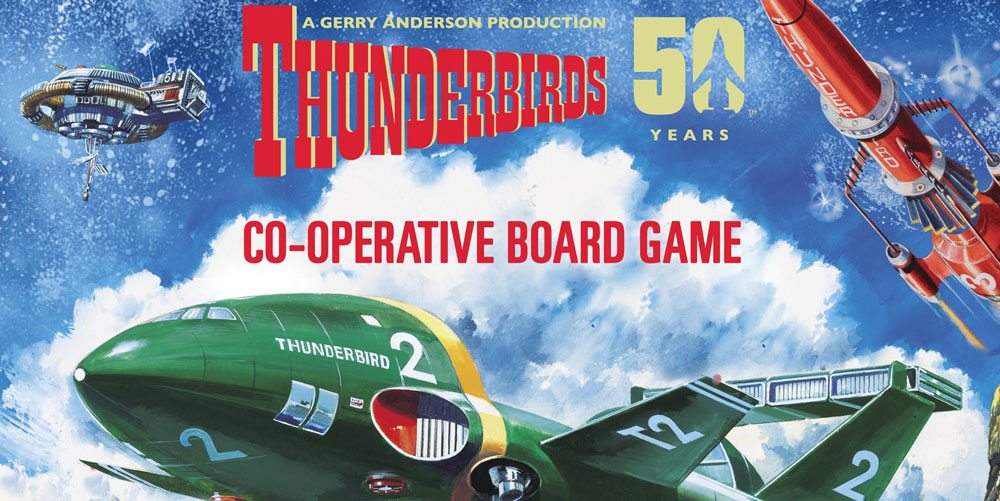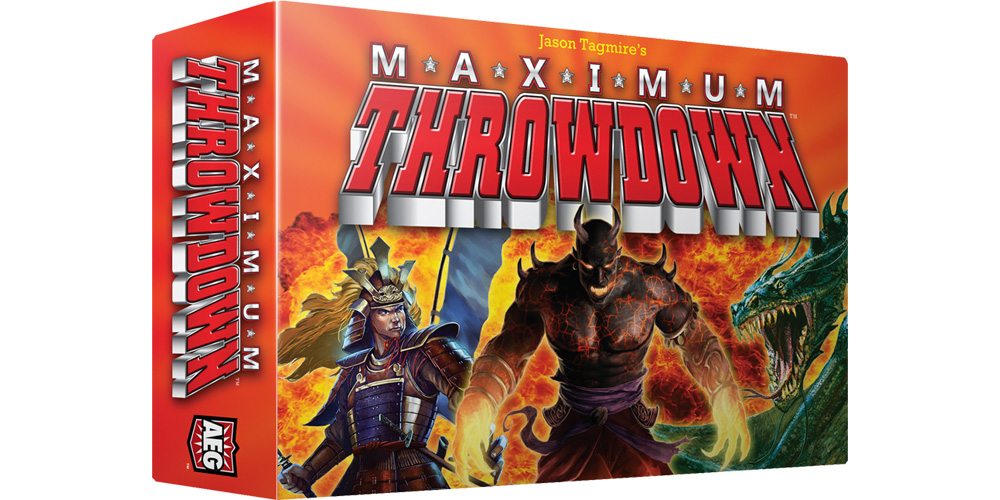In “Reaping the Rewards,” I take a look at the finished product from a crowdfunding campaign. Restoration Games raised $2.8 million last year with its reboot of the legendary Fireball Island, which was shipped out to backers at the end of 2018 (though delivery to some parts of the world continued through January). I took a look at the base game and the Last Adventurer expansion back in November, and today I’ll show you two more expansions, which have hit store shelves.
Crouching Tiger, Hidden Bees! ($15) introduces a leaping tiger and a swarm of bees for added chaos. Wreck of the Crimson Cutlass ($40) adds a crashed pirate ship board that has new treasures—but also new dangers. I’ll take a closer look at each expansion individually.
Fireball Island: Crouching Tiger, Hidden Bees!
Despite the title, this expansion has nothing to do with martial arts or legendary swords: it’s literally a tiger and bees!

Fireball Island: Crouching Tiger, Hidden Bees! Components
Crouching Tiger, Hidden Bees! comes in a smaller box, but you’ll probably just want to ditch the box and put everything into your base game box anyway. Here’s what’s included:
- Crouching Tiger
- 11 Bee marbles (10 for gameplay, plus 1 spare)
- Beehive cup
- 6 Bee Sting tokens
- 3 Honey Pot tokens
- 13 Action cards
- 1 Souvenir card
- 1 Reference card
The crouching tiger is one of those plastic springy toys, where you push down the tab in the back and then it shoots up into the air—we’ve had plenty of frog-shaped ones over the years. They can jump a little or a lot and are a bit hard to aim precisely.
The bee marbles are tiny, so it’s nice that there’s a spare included. The marbles fit into the beehive, which is just a little yellow cup shaped like a beehive (though it’s kind of upside-down), which has a little spout to make it easier to pour out the marbles.

The honey pot tokens are little cardboard punch-outs that you assemble, and the bee stings are simple cardboard tokens with a bee icon on them. The cards, of course, match the base game cards so they can be shuffled into their respective decks. The reference card is handy so that you can have a reminder of the new game rules without having to refer to the rulesheet once you’ve learned how it all works.

How to Play Fireball Island: Crouching Tiger, Hidden Bees!
During setup, you’ll place three honey pots on specific treasure locations, replacing the treasure icons there. (The third one is peeking out behind Vul-Kar in the photo above.) Honey pots count as a treasure and are worth 6 points at the end of the game, but you get a bee sting when you acquire one.

If you play one of the new action cards that lets you pour in the bees, you do just that: take the beehive cup, and pour all of the bees into the top of Vul-Kar! The tiny marbles will bounce all over the island, potentially knocking loose other marbles or knocking players over (in which case you get to take treasures from them as usual). In addition, if after everything settles, any player figure is still in contact with a bee, that player gets a bee sting token. (You can only have one bee sting at a time.) If you start your turn with a bee sting, you only get half your movement on your action card for your next turn, and then discard the bee sting.

The other new cards pertain to the tiger, of course. A few movement cards let you launch the tiger after your move, and the new “Tiger Bait” souvenir card lets you launch the tiger before you move.

Launching the tiger does exactly what you expect: you put the tiger anywhere on the table, press down, and let it fly. Any player that gets knocked down has to give you three treasures. Although it’s hard to be precise with the tiger, if it flies high enough, it can also sometimes rattle the board enough to shake loose a few marbles or knock over a wobbly figure, so you can also manage to get treasures that way.
Fireball Island: Wreck of the Crimson Cutlass
Just off the coast of Fireball Island, there’s an abandoned pirate ship (accessible through the network of caves). Surely there’s treasure to be found there! I’m sure there’s nothing to worry about on board, either.

Fireball Island: Wreck of the Crimson Cutlass Components
Wreck of the Crimson Cutlass is a somewhat larger box, and with the molded plastic board, it doesn’t really fit into the base game box. Here’s what’s inside:
- Crimson Cutlass board
- Bowsprit piece
- Captain’s Wheel piece
- Mast and Crow’s Nest piece
- 3 Cannons
- 5 Cannonball marbles (4 for gameplay, 1 spare)
- 4 Ember marbles (3 for gameplay, 1 spare)
- 10 Cursed Sapphires
- 10 Action cards
- 3 Souvenir cards
- 3 Snapshot cards
- 8 Sinister Motive cards
- 1 Reference card
The board, like the main Fireball Island, is a single molded plastic piece with various divots and slots for attaching other pieces. It looks like a rocky inlet with the pirate ship crashed into the rocks. The mast and crow’s nest attaches to one side, and the cannons fit into the deck. As with the main board, there are various paths around the board, with printed icons indicating where to put the ember marbles and the sapphires. It’s a fun-looking board, though I feel like it would have been cool for it to attach to the main island somehow, maybe at one of the side openings of the island.
The cards and marbles are all the same type and quality as in the base game, though the sinister motives are a new card type, which I’ll explain below.

How to Play Fireball Island: Wreck of the Crimson Cutlass
Once you get everything assembled (attach the bowsprit, cannons, captain’s wheel, and the mast piece), there are three places to put the ember marbles (two on the rocks and one on the bowsprit). The cannons all start off pointing toward the mast. One cannonball goes into the crow’s nest and the others are placed on the beach in the little divots there. The sapphires are placed in the various locations with the icons—some have 2 sapphires and some have 3. The snapshot cards are set nearby, and if you’re using the sinister motives, shuffle the cards and deal one to each player—these are kept secret.
Players may now enter the new board through one of the three caves, and the path goes around outside the ship as well as onto the ship itself, with a few spaces marked where you can stop to pick up a sapphire. The sapphires are worth 2 points at the end of the game, but you can also spend them for extra actions! Place one into the Maw, and then reset the board and play a second action card. (You may only do this extra action once per turn.)

On the captain’s wheel, there’s a snapshot space; if you snag a snapshot here, it’s worth a whopping 10 points (if you make it back to the helicopter). But the captain’s wheel is also an unstable space, so you have to stop moving there: if a marble hits the wheel just right, the platform flips up, too.
When you launch an ember marble, you now have the options for pushing the marbles on the rocks, or you can tap the bowsprit (on the skull and crossbones), which will launch the marble in the skull’s jaws.

It wouldn’t be a pirate game without a little piracy, right? The new action cards let you steal treasures as you pass players, and you also get to knock over the crow’s nest. The crow’s nest always has the same number of marbles as the scar, so every time you add marbles to the scar, you also add cannonballs to the nest. When you knock it over, it pours out the marbles onto the deck of the ship, where they’ll get redirected by the cannons, eventually rolling out the sides of the ships and onto the beach if they don’t get stuck. When you use a rotate action, you may rotate all three cannons as a single action.

If you’re looking for a fun souvenir to bring home to the kids, the Black Spot isn’t it. It’s a souvenir card that will cost you 7 points if you’re stuck with it at the end of the game, and it’s a bit of a hot potato. You can’t play it, but if you pass another player, you can give it to them. The other new souvenir is the Spyglass, which becomes a treasure of any color, so you can maximize its value.

Finally, there are the sinister motives, which may affect your score at the end. Each one gives you an additional option for scoring some bonus points. None of the secret motives are specifically tied to the Crimson Cutlass board, so you can use them even if you’re just playing with the base game.
The Verdict on the Fireball Island Expansions
I enjoyed Fireball Island enough to give it our GeekDad Approved status, with a note that it gets a lot of points for its nostalgia factor. It’s a different game from the 1986 original—branching paths give you a little more choice about the directions you want to take—but ultimately what you really want out of this game is knocking people down with marbles, right?
I know some people haven’t enjoyed the reboot, partly because there are ways to divert marbles to protect yourself, partly because there’s more than one channel for the marbles to flow down, so you might not always hit the person you’re aiming for. For those players, I recommend the Crouching Tiger, Hidden Bees! expansion: particularly the bees half of that title. There’s nothing quite like pouring in a cup full of tiny yellow marbles and watching them bounce and roll all over half of the island. Vul-Kar can direct the marbles in three possible paths, so when you drop one at a time there’s only a one-third chance that you’re going to hit the path you want. With the bees, though, chances are that at least one will come charging down any given path. They’re smaller, so they don’t always connect with everything on the path, but your odds are pretty good. (The bee stings, on the other hand, are another story, because it requires the bee to remain in contact with the figure.)
The tiger is, I suppose, a little more skill-based. I say “I suppose” because I’m personally terrible at launching the tiger and so it feels fairly random to me. But it seems to be the sort of thing that one could theoretically get better at with practice, aiming the tiger at a particular figure on the island. The way we played it, we just launched it as high as possible toward the most densely populated portion of the island, hoping that if we didn’t score a direct hit, maybe at least the jostling would knock somebody over. We all cheered at my five-year-old’s direct hit on her sister, just because it was so marvelous: a tiger dropping out of the sky!
The Wreck of the Crimson Cutlass expansion I’d recommend more for players who want to add a little more risk and reward to the game. Heading out to the pirate ship can get you those crystals—not a lot of points, but being able to play two action cards on a single turn is a really powerful thing. Plus, if you’re the sort who likes to collect snapshots, you’ve got a chance at a 10-pointer there. The downside is that if other players are racing to get back to the chopper, you might not be able to get back in time, not to mention that being on the pirate ship makes you an easy target for those cannonballs and the ember on the bowsprit. (The cannons do help protect you, if they’re turned the right way.)
The secret motive cards don’t change the game too much, but they do give everyone a nudge in different directions. One player may be trying to focus on blue treasures, one wants extra snapshots, and another just wants to get back to the helicopter first. I like that it’s a little tweak that just adds a little asymmetry to the game, without changing things too much.
If you got Fireball Island through the Kickstarter campaign, there’s a good chance that you already have all the expansions (since more than half of the backers went all in). In case you were waiting to see how they turned out, I think the expansions do feel a lot like the base game: a little more chaos with Crouching Tiger and an extra map to explore with the Crimson Cutlass. I don’t think either expansion is likely to change your overall opinion of the game drastically, but if you’re a fan of the base game, they’re fun additions to add a little more variety.
Look for the expansions in stores; they should also be available directly from the Restoration Games website soon.
Click here to see all our tabletop game reviews.
![]() To subscribe to GeekDad’s tabletop gaming coverage, please copy this link and add it to your RSS reader.
To subscribe to GeekDad’s tabletop gaming coverage, please copy this link and add it to your RSS reader.
Disclosure: GeekDad received a copy of this game for review purposes.







